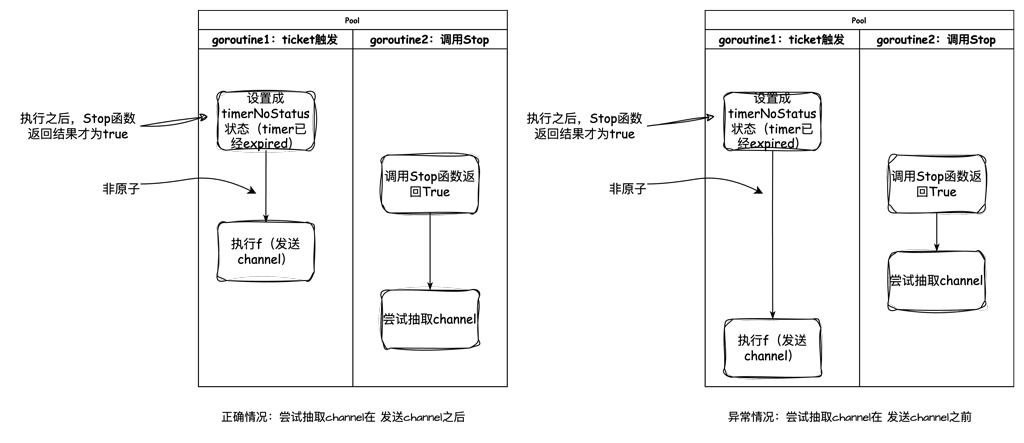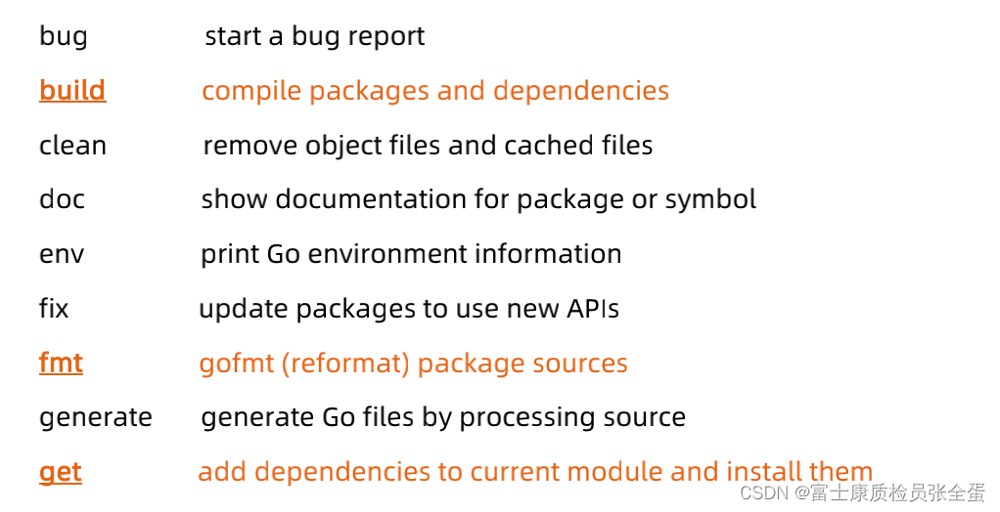testing包服务于自动化测试
基本测试
Table Drvien Test
基于表的测试通过表形式进行测试每种情况的输入和期望输出,从而测试程序的正确性
|
1 2 3 4 5 6 7 8 9 10 11 12 13 14 15 16 17 18 19 20 |
func TestFib(t *testing.T) { var fibTests = []struct { in int // input expected int // expected result }{ {1, 1}, {2, 1}, {3, 2}, {4, 3}, {5, 5}, {6, 8}, {7, 13}, } for _, tt := range fibTests { actual := Fib(tt.in) if actual != tt.expected { t.Errorf("Fib(%d) = %d; expected %d", tt.in, actual, tt.expected) } } } |
- 跳过测试
- SkipNow(): 跳过测试
- Skip(): 跳过测试并输出log
- Skipf(): 跳过测试并格式化输出log
- 失败但继续
- Fail(): 标记测试失败,但继续执行
- FailNow(): 标记测试失败,不继续执行
- Error(): 标记测试失败,并输出
- Errorf(): 标记测试失败,并格式化输出
- 输出
- Log(): 输出
- Logf(): 格式化输出
- 失败且中断
- Fatal(): 相当于FailNow() + Log()
- Fatalf(): 相当于FailNow() + Logf()
Parallel()
Parallel方法表示会和其他带有Parallel方法的测试并行执行
ExampleXXX()
ExampleXXX方法中如果含有Output: 开头的行注释,则会在运行测试期间,将输出和注释中的值相比较
如果是不确定的顺序,则可以以Unordered output: 作为开头
但如果没有这样的注释,这就是一个普通函数,不能被直接运行
压力测试
压力测试方法以func BenchmarkXXX(*testing.B)函数名展现。
函数体格式如下
|
1 2 3 4 5 |
func BenchmarkHello(b *testing.B) { for i := 0; i < b.N; i++ { // do sth } } |
压力测试会自动调整b.N使得持续足够长时间
重置计时器
如果想要跳过不需要计时的耗时工作,那么可以通过b.ResetTimer()重置计时器
并行测试
如果想并行压力测试,那么可以通过RunParallel实现
|
1 2 3 4 5 |
func BenchmarkHelloParallel(b *testing.B) { b.RunParallel(func(pb *testing.PB) { // do sth }) } |
内存统计
ReportAllocs方法用于打开内存统计功能
输出结果就会变成如下形式
// 方法名 迭代总次数 平均每次迭代时间 平均每次迭代分配字节数 平均每次迭代的内存分配次数
BenchmarkHello 2000000 898 ns/op 368 B/op 9 allocs/op
自定义度量值
ReportMetric(n float64, unit string)汇报自定义度量值
- 如果度量值是每次迭代的,你应该将其除以 b.N。
- 按照惯例,单位应该以 “/op” 结尾。
- ReportMetric 会覆盖同一单位的任何先前报告的值。如果单位是空字符串,或者单位包含任何空格,ReportMetric 会引发 panic。
- 如果单位是基准测试框架本身通常报告的单位(如 “allocs/op”),ReportMetric 会覆盖该度量值。
- 将 “ns/op” 设置为 0 将禁止该内置度量值。
|
1 2 3 4 5 6 7 8 9 10 11 12 13 14 15 16 |
testing.Benchmark(func(b *testing.B) { var compares int64 for i := 0; i < b.N; i++ { s := []int{5, 4, 3, 2, 1} sort.Slice(s, func(i, j int) bool { compares++ return s[i] < s[j] }) } // This metric is per-operation, so divide by b.N and // report it as a "/op" unit. b.ReportMetric(float64(compares)/float64(b.N), "compares/op") // This metric is per-time, so divide by b.Elapsed and // report it as a "/ns" unit. b.ReportMetric(float64(compares)/float64(b.Elapsed().Nanoseconds()), "compares/ns") }) |
子测试
子测试也就是可以在测试中测试,子测试可以共用初始化等公共操作,并可以做父测试执行前的必要操作
|
1 2 3 4 5 6 7 8 9 10 11 |
func TestSubTest(t *testing.T) { t.Run("sub1", func(t *testing.T) { t.Log("sub1") }) t.Run("sub2", func(t *testing.T) { t.Log("sub2") }) t.Run("sub3", func(t *testing.T) { t.Log("sub3") }) } |
模糊测试
模糊测试方法名为func FuzzXXX(f *testing.F)
|
1 2 3 4 5 6 7 8 9 10 11 12 13 14 15 16 17 18 19 |
func FuzzReverse(f *testing.F) { // 为模糊测试添加用例到种子语料库 testcases := []string{"Hello, world", " ", "!12345"} for _, tc := range testcases { f.Add(tc) // Use f.Add to provide a seed corpus } // 进行模糊测试。对于string类型的参数,将生成随机字符串 // 对于本测试中的Reverse方法是可逆的,因此可以通过两次逆行操作来验证其正确性 f.Fuzz(func(t *testing.T, orig string) { rev := Reverse(orig) doubleRev := Reverse(rev) if orig != doubleRev { t.Errorf("Before: %q, after: %q", orig, doubleRev) } if utf8.ValidString(orig) && !utf8.ValidString(rev) { t.Errorf("Reverse produced invalid UTF-8 string %q", rev) } }) } |
运行模糊测试有go test和go test -fuzz两种方式,前者仅会运行手动添加的用例,而后者则会随机生成数据
值得注意的是如果go test -fuzz执行之后存在运行错误的用例会添加到语料库文件中,那么即使下次执行的是go test也依然会执行语料库文件中的用例
Ref
https://go.dev/doc/tutorial/fuzz
https://books.studygolang.com/The-Golang-Standard-Library-by-Example/chapter09/09.0.html


